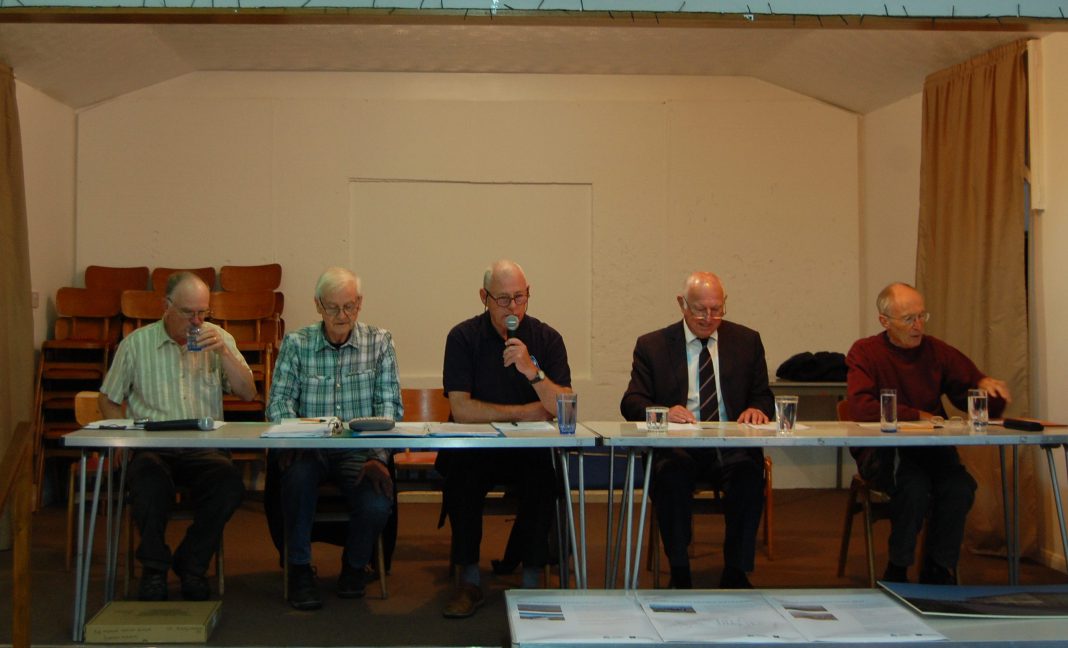Friends of Rye Harbour Nature Reserve held their annual general meeting last Saturday. Chairman Cliff Dean first paid tribute to David Powell, treasurer of the association since 2007, who had died during the year past.
A modest and private person, he had been a member since 1999, a regular volunteer at Lime Kiln Cottage and on the annual tern watch. A painting by local artist Robert Greenhough of Little Terns has been presented to his widow Yvonne.

“A lot had happened over the last year”, he continued. “The Discovery Centre has been our biggest undertaking, with the planning application decision expected mid November. The temporary cabins have attracted a larger number of visitors and the funding appeal is under way.” The aerial film of the Reserve taken by drone, had been showing at the Rye Kino and had also attracted new members. Part of the film had been used recently on BBC 1’s Inside Out so it had proved a good investment and it was proposed to make another such film with a winter landscape. The new book of Rye Harbour photographs was nearing completion and would be on sale before Christmas, priced £15.
Lucy Bowyer mother of twins had returned to work following maternity leave to become People and Wildlife Officer, and so Andy Dinsdale has stood down from covering her absence, but he will be helping on an occasional basis. Linda Wren had encouraged a greater number of volunteers to come forward. Membership now stands just short of 2000 at 1970 members, with 62 attending the AGM.
The officers were re-elected: Cliff Dean chairman; John Barnes deputy chairman; John Trowell secretary, Mike Russell treasurer and Pat Bonham membership secretary.
Following an interval, Barry Yates, the reserve manager, presented an illustrated history of the changing geography of the area, from 1915 when it was first identified as a special area of nature conservation by Lord Rothschild, coming forward to 1946 when the major salt marsh reclamation project got under way with the building of the concrete road to the shore.
It became designated as a Site of Special Scientific Interest in 1956 and has evolved into its current shape as a major UK wildlife reserve under the management of the Sussex Wildlife Trust. In 2016 it became a Ramsar site, a wetland of international importance especially as a waterfowl habitat, designated under the Ramsar Convention, named after the city of Ramsar in Iran where the Convention was signed in 1971.
Photos: Kenneth Bird and RHNR



